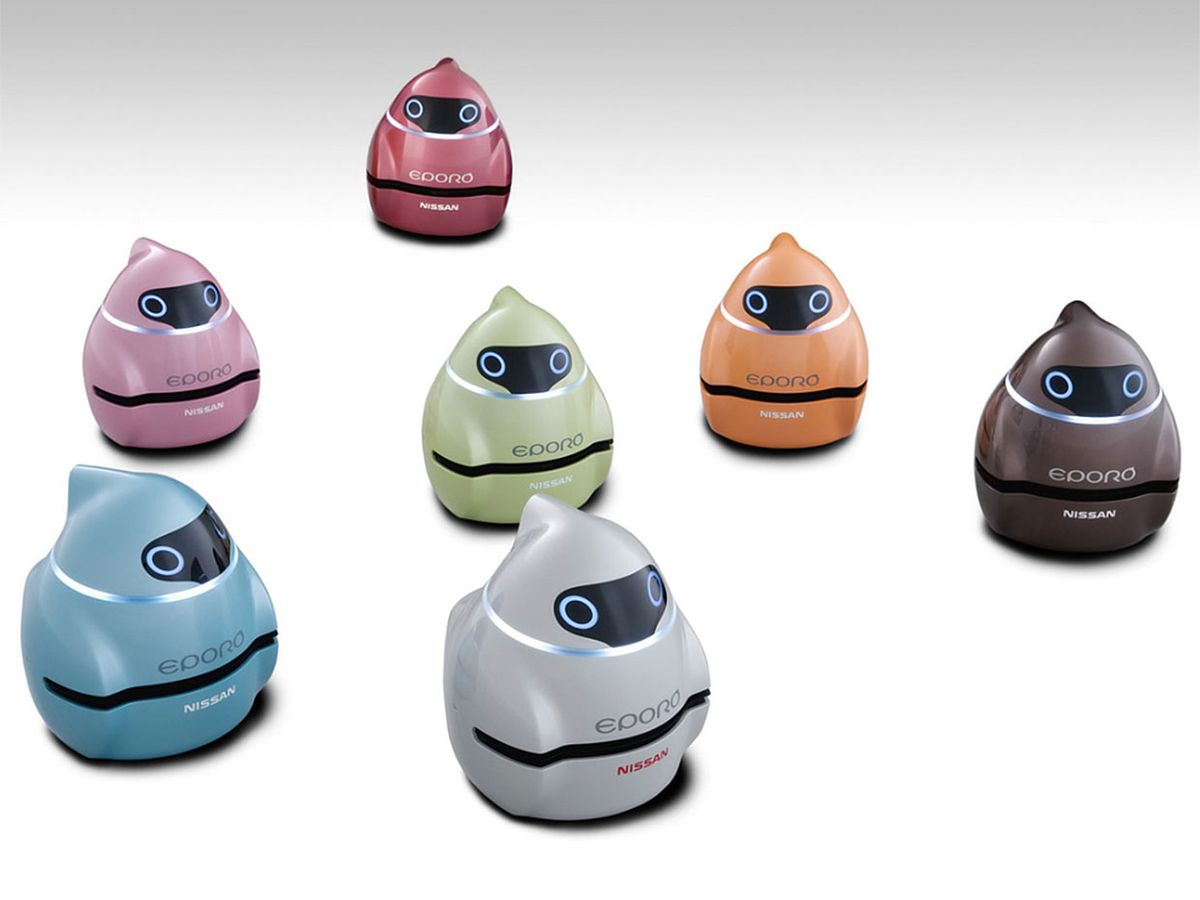One of the innovations featured at this year's CEATEC exhibition, running from October 6th to 10th at the Makuhari Messe just outside Tokyo, is a new robot car concept by Nissan. At 50cm in height and with a maximum speed of approximately 1.4km/h the EPORO robots can hardly be called car demonstrators, but the small robots moving in a group of 6 showcase some interesting technology.
Equipped with laser range finders and UWB communication the robots use a swarming algorithm similar to that observed in fish. While this is hardly new - computer simulations of such swarming behaviors have been conducted since the 80s - what's interesting is the implementation of a real demonstrator by a leading car manufacturer.
Like real fish, the EPORO only relies on relative positioning which would allow the necessary scalability for such a technology to be implemented in real cars.
While Nissan has not disclosed the exact algorithm, it is based on a basic shoaling algorithm, splitting the behaviour into three modules based on distance as illustrated in the right figure above:
- AREA 1: Collision Avoidance: Change traveling direction without colliding with other fish.
- AREA 2: Traveling Side-by-Side: Travel side-by-side with other fish while keeping a certain distance between each fish (to match the speed).
- AREA 3: Approaching: Gain closer proximity to other fish that are at a distance from them.
Nissan does not necessarily plan to commercialize the little robots themselves but aims at employing the underlying technology in their future vehicles by integrating it into their Safety Shield concept, aimed at supporting drivers in all situations from normal driving to the events following a collision.
Following an earlier prototype which could just avoid collisions last year and this year's announcement of the EPORO, it will be interesting to see Nissan's next step in moving these technologies towards commercialization.



